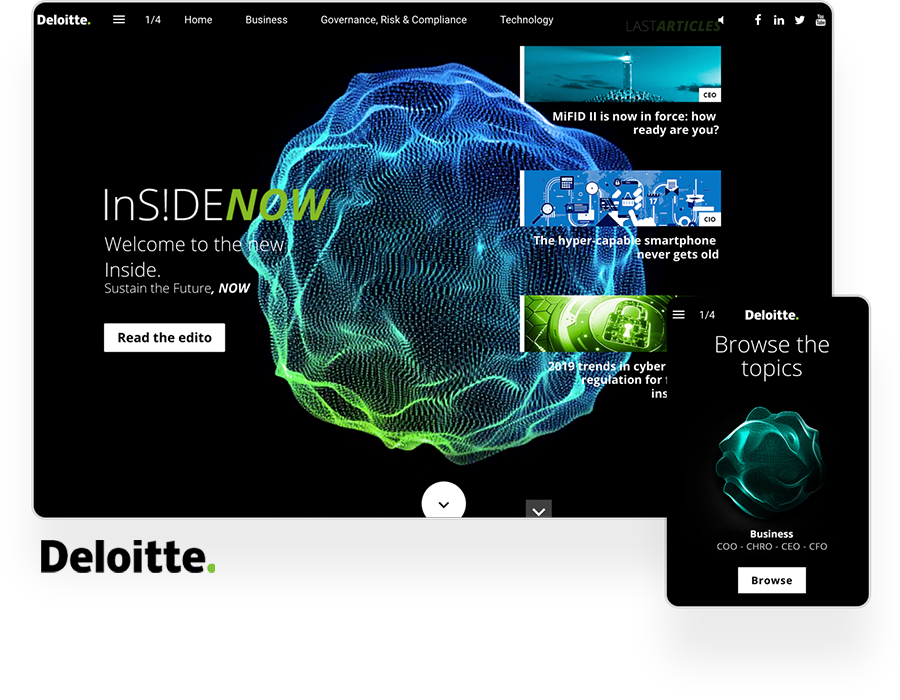A new B2B consumer has emerged amidst a decade of dramatic change to the B2B marketing and sales landscape. Cutting-edge digital platforms now drive how business gets done and increasingly guide how decisions are made.
Traditional strategies are becoming obsolete as content marketing replaces the sales techniques of yesteryear, and a modern B2B consumer with distinct buying habits has come into focus.
The new B2B buyer: younger, more informed, empowered to make purchasing decisions, and expecting a personalized experience
The last decade has seen a shift in the basic assumption of what to expect from a digital experience. This is now true in B2B sales, with many buyers bringing their personal purchasing habits to their work.
And who is the new B2B buyer?
Pew Research found that digitally native Millennials now outnumber GenXers as the largest generation in the US workforce, and they’re not just taking orders — they’re placing them. A report by marketing consultancy Merit found that 73% of Millenials make purchasing decisions for their companies, a third of whom are the sole decision makers.
With great power comes great responsibility, and these decisions are not being made lightly. But they are increasingly self-driven, and more often than not, today’s B2B buyer begins their purchasing journey in a search engine.
More than ever, it’s the personal search driving the momentum of a purchase, as evidenced by Merit, which points out that a quarter of millennial buyers begin business buying decisions in search, a higher number than those who start at a vendor website, peer review, or salesperson interaction.
And while more personal research is being done, it’s combined with a more skeptical eye towards marketing material that isn’t trusted or viewed as transparent. Salesforce’s 2019 Connected Consumer Report reflects that trend, with 54% of respondents admitting it’s harder than ever for companies to earn their trust and 73% claiming trustworthiness matters more than a year ago.
To top it off, consumer’s today simply expect more. Influenced by the customized experiences available on Spotify, Amazon, and Netflix, for example, results in a higher bar to satisfy potential customers.
A traditional sales funnel stocked with stodgy, non-personal digital content won’t get the job done in 2021.
Discover: Time to rethink the B2B buyer journey
Content matters more than ever
These heightened expectations, combined with the fact buyers prefer their own research over engaging with salespeople, make it more critical than ever to create content that will not only engage the new B2B customer but that can accelerate the purchasing journey.
Attention spans are shorter than ever, and a multitude of alternatives are just a click or an already open browser away. Time is limited, making it crucial you deliver your content with a sense of urgency. Disruption to the old sales funnel has left a void, and content is the connective tissue that can fill in the gaps.
This pushes thoughtful, responsive, and unique content to the forefront as a difference-making asset for multiple reasons.
Not only do these assets have the power to connect with customers and drive purchasing decisions, but they cross more intersections on the buying journey than ever before, acting as important sales chaperones in what is now a non-linear, self-driven purchasing path.
Content should stretch the entire consumer journey and add value even in product-agnostic areas such as problem ID, problem exploration, and requirements building.
A dynamic asset can seamlessly collect and connect actionable insights to sales teams who can use the data to make the online to offline experience more engaging.
A more discerning, skeptical B2B customer with higher expectations and a myriad of purchasing options, combined with a sales landscape that is less linear and more apt to produce a sale at any point along the journey, means this: content must be dynamic to stand out. It cannot be ordinary in concept or presentation.
What makes content dynamic?
It’s easy enough to talk about creative content, but what does it look like?
For starters, it means pivoting away from static content that offers no avenue to interact and engage with a company’s product in a lively, media-rich way. Don’t forget, the content experience standard isn't just your direct competitors; it’s also what a consumer might engage within the wider media landscape.
The B2B consumer expects a multimedia experience that feels alive offers rich, engrossing visuals, and provides a sophisticated interaction. For content to make an impression, it must feel bespoke to the user — interesting enough to spend time with but authentic in its story and the value it can offer.
Video and interactives are increasingly being utilized in B2B marketing, and according to Google 70% of business vendors watch a video during the buying process.
And while traditional assets such as e-books, whitepapers, and research reports are still very much a part of any effective marketing campaign, the common format for that content — the PDF — has become more of a liability than an asset as consumer habits have evolved.
Not only does the PDF offer the consumer zero opportunities for interaction, but they don’t provide any analytic insights that could be useful in understanding if and how the content is engaging the customer.
Accessible from anywhere, on any device
Just as important as creating content that stands out is making it accessible on the platforms consumers are using. Your content must be responsive for the B2B consumer accustomed to gathering information and drawing conclusions while on their mobile devices.
Just as many large-scale retailers and streaming services will have dynamic mobile capabilities, the types of b2b content you put out to the marketplace should be flexible, agile, and mobile-friendly.
This dynamic content from Deloitte demonstrates a mobile-friendly B2B approach
Like in the B2C space, mobile consumption is increasing faster than desktop, and the ability to communicate with your potential customers on their preferred platform will only enhance your marketing campaigns.
What it all means: Aspire to create a content experience that converts
Gaining an edge and finding success is always going to be extremely challenging. And today, with the digital transformation of the marketing process now revolving around a new type of B2B buyer, it’s critical to adjust accordingly.
The buyer’s journey takes place on a brand new road, where speeds are faster, and shortcuts abound. Many of the old rules of the road have changed or disappeared, and while it’s impossible to know every turn ahead, one principle is clear: investing in dynamic content that can inform, engage, and inspire a customer is a strategic must.
So don’t fall behind or stay stuck where you are. Stand out, innovate. Modernize your content and accelerate your buyers' journey.



.png?width=527&name=Overcome-Content-Creation-Barriers%20(1).png)
